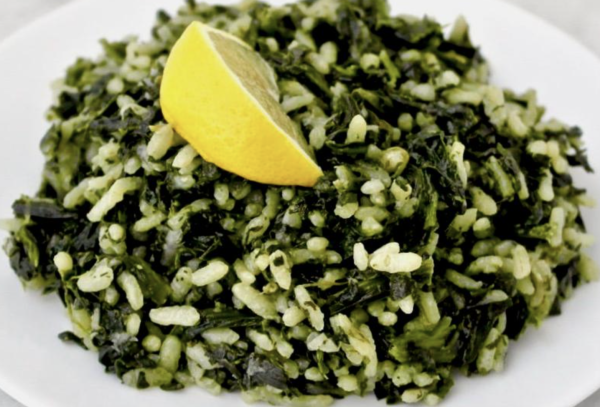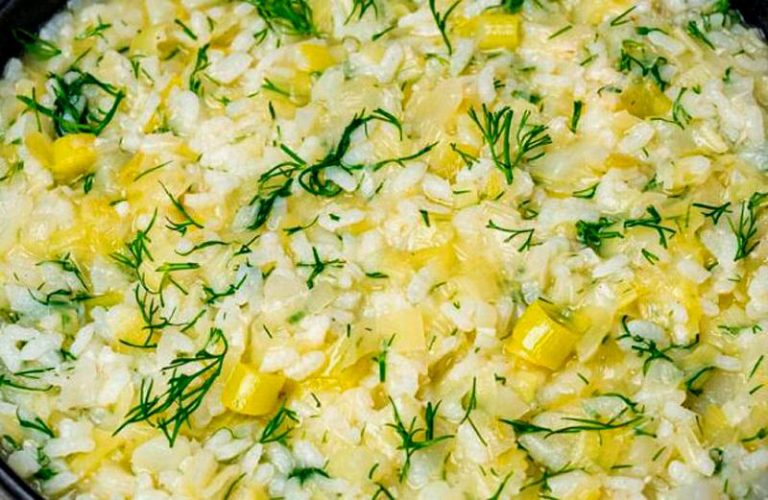Published with permission from LuxuryWeb.com
In the heart of a Greek kitchen lies a delightful array of vegetable and rice concoctions, versatile enough to serve as either the centerpiece of a meal or an accompaniment. Known as “ladera,” these dishes are rich with olive oil, or “nistisima,” signaling their appropriateness for consumption on meat-free days like Friday in traditional Greek Orthodox practice or throughout Lent, when animal proteins are eschewed. Globally, these dishes are embraced as vegetarian classics.
Among these, the trio of spanakorizo (spinach and rice), prasorizo (leeks and rice), and lahanorizo (cabbage and rice) reign supreme.
My personal rendition of prasorizo is a dish I cherish, especially in spring and autumn when leeks are most flavorful. Deviating from the “nistisima” tradition, I infuse my recipe with chicken stock, elevating the flavor beyond that which plain water can achieve. Prasorizo on my table finds its place as either a hearty main or a complementary side.

As a side, it’s the perfect partner for an array of charcoal-grilled meats — chicken, succulent lamb chops, or an assortment of fish such as gilthead bream, branzino, or porgies. It even holds its own next to a robust swordfish steak adorned with a tangy horseradish and mayonnaise sauce, grilled to perfection as the sauce bubbles enticingly.
Success
You are now signed up for our newsletter
Success
Check your email to complete sign up
Prasorizo Ingredients:
- 2 robust leeks
- 3 spring onions
- 2 or 3 cloves of garlic, finely chopped
- 6 or 7 sprigs of dill, roughly chopped
- ¼ cup of extra virgin olive oil
- 1 cup of rice (Arborio or Vialone Nano preferred, though Basmati is suitable)
- 1 ⅔ cups of chicken stock
- Lemon juice to taste
- ⅓ cup of dry white wine, Chardonnay recommended
- 3 slices of firm Jersey Tomato, cut into strips
- Salt and black pepper to taste

Cooking Method:
- Begin by removing the topmost layer of the leek and discarding it.
- Rinse the leeks thoroughly to remove any hidden sand, particularly in the green leafy sections.
- Chop the leeks into ¼ inch slices, including the tender green parts, and plunge them into a cold water bath. Stir to dislodge any remaining grit, then dry using a salad spinner.
- Slice the scallions, incorporating the tender greens, and dice the garlic. Proceed to chop the dill.
- Warm the olive oil in a sauteuse over medium heat.
- Toss in the prepared vegetables, seasoning with salt and pepper, and sauté until they soften.
- Introduce the rice, stirring it into the vegetables, and sauté briskly for five minutes.
- Pour in the chicken stock, wine, and lemon juice, followed by the tomato strips.
- Reduce the heat to medium-low, cover the sauteuse, and let simmer for 19 to 23 minutes until the rice has absorbed the liquid and is perfectly cooked.
- Perform a final taste test and adjust the seasoning as needed.
When I make spanakorizo, the approach is much the same, though it is “nistisimo”—prepared with water and served with lemon wedges for individual seasoning. It frequently graces my table alongside charcoal-grilled lamb chops or, on special occasions, a full frenched rack of lamb.

To complement the flavors, I match the leek and rice dish with a crisp rosé wine, while the spanakorizo and lamb find harmony with a Sangiovese-based Tuscan wine or a robust Greek Xinomavro. Some lighter Chilean red blends also fit the bill quite nicely, though I typically steer clear of the heavier French Bordeaux varieties.
The interplay of flavors and traditions in these dishes celebrates the versatility and richness of Greek cuisine, where even the simplest ingredients are transformed into a feast for the senses.
Visit LuxuryWeb.com to see the original article, and more.













